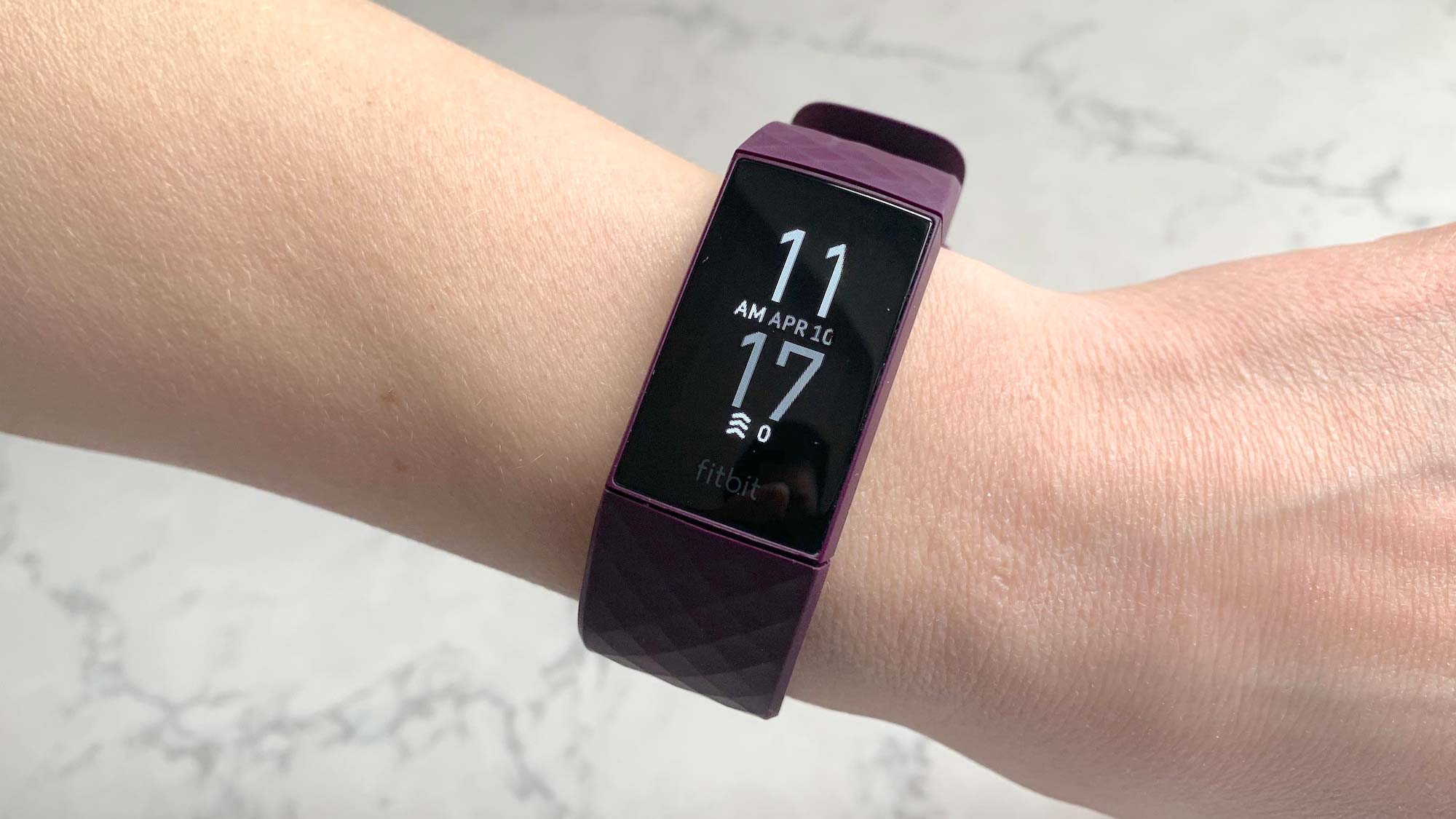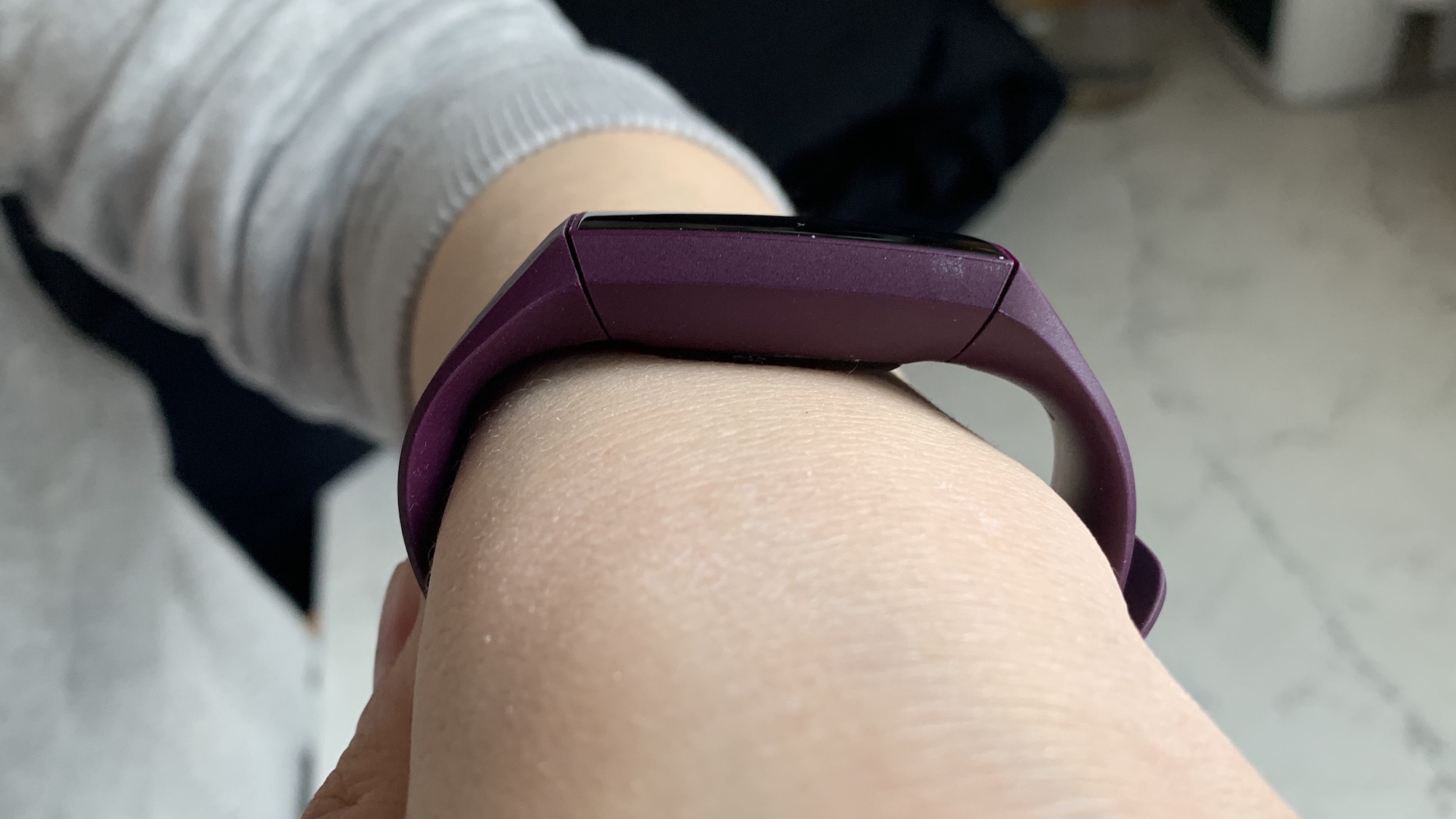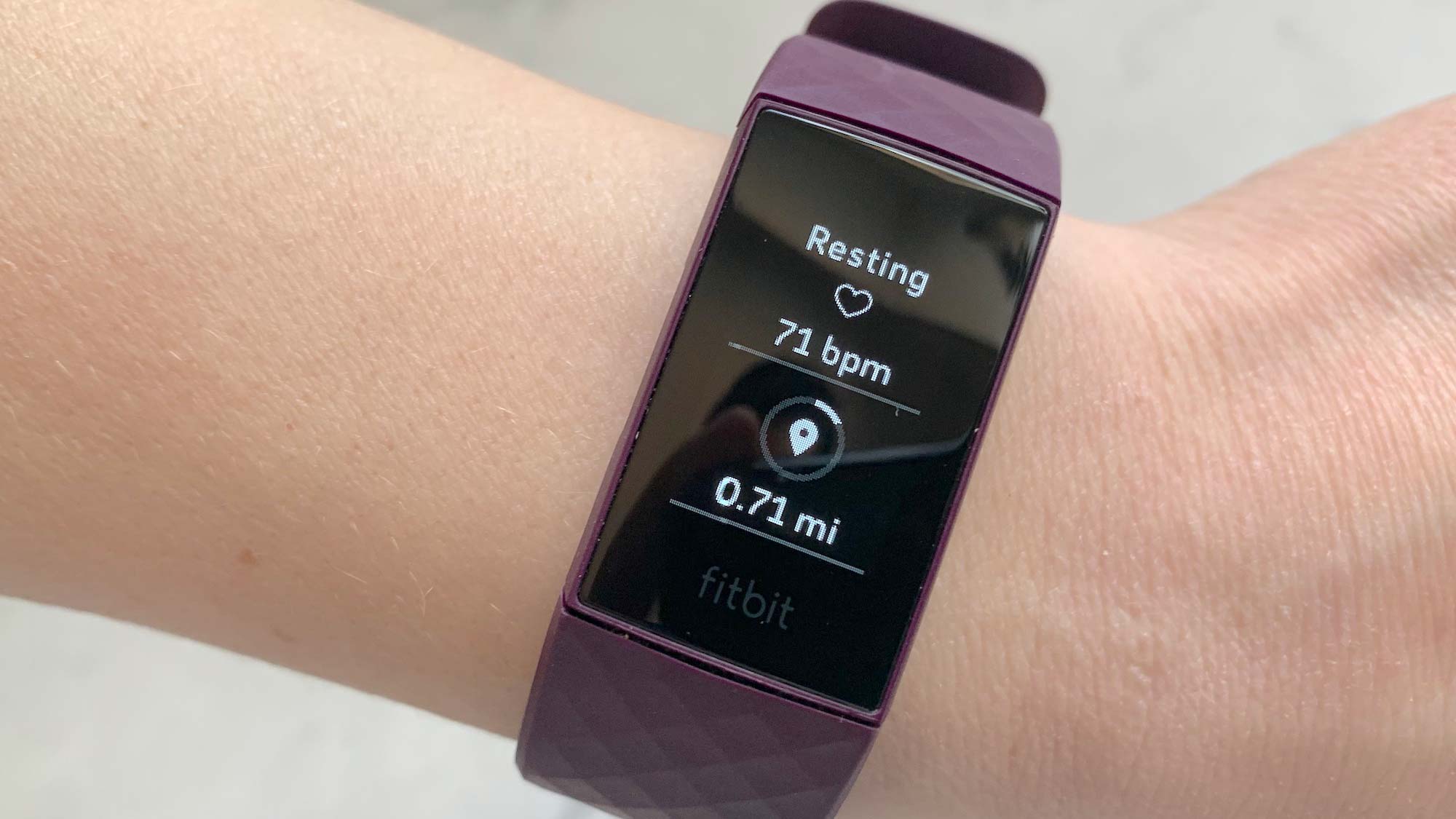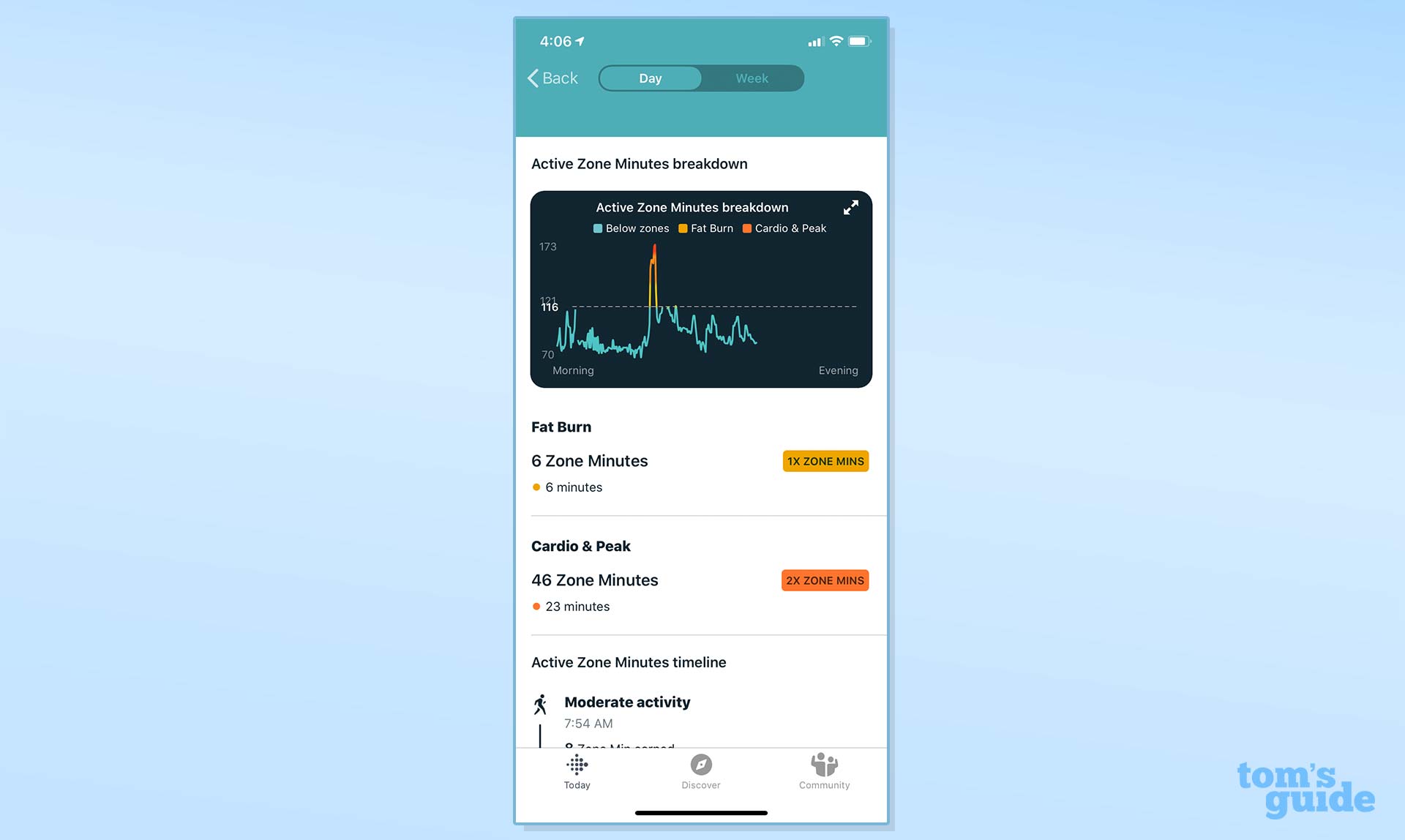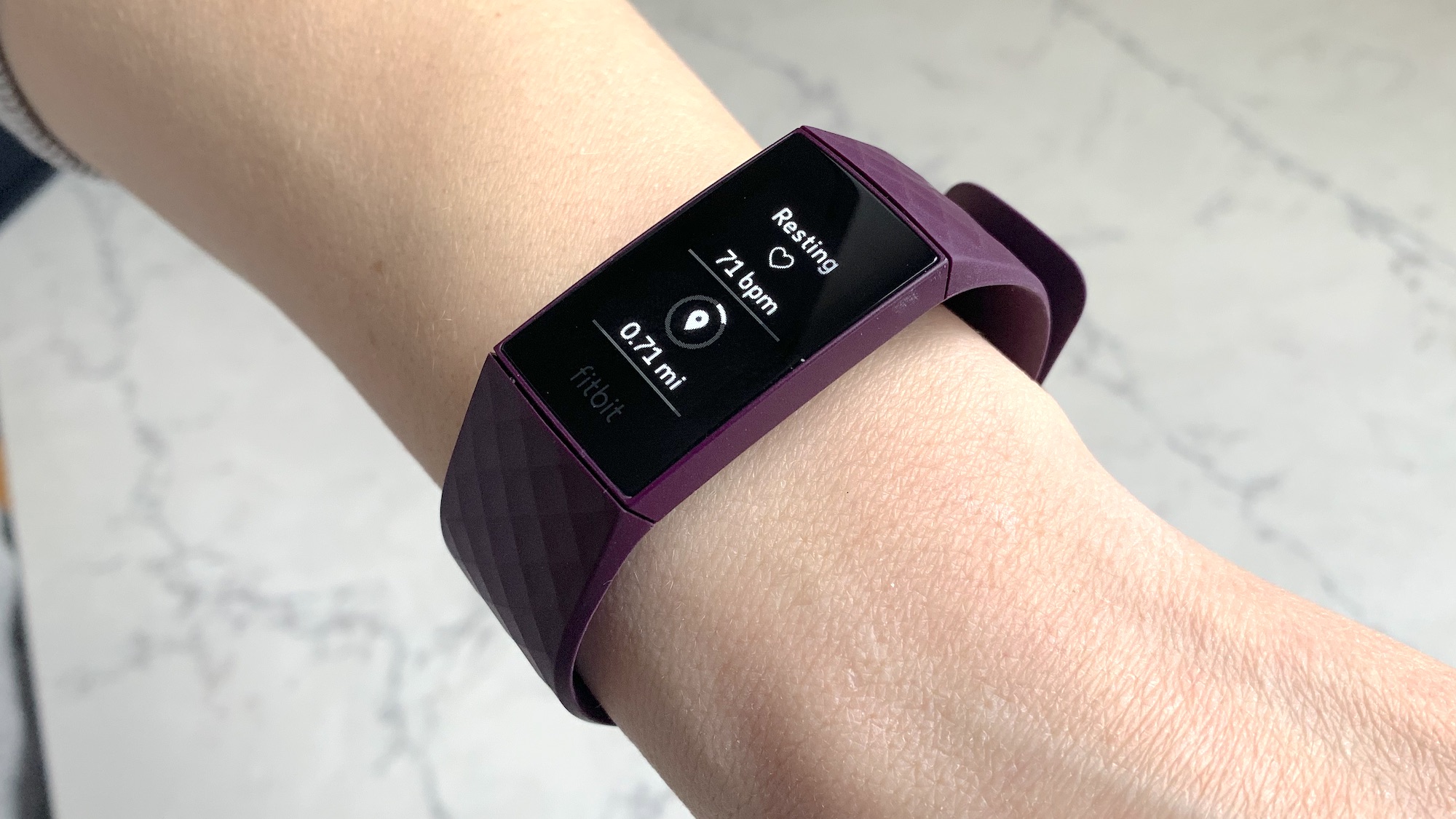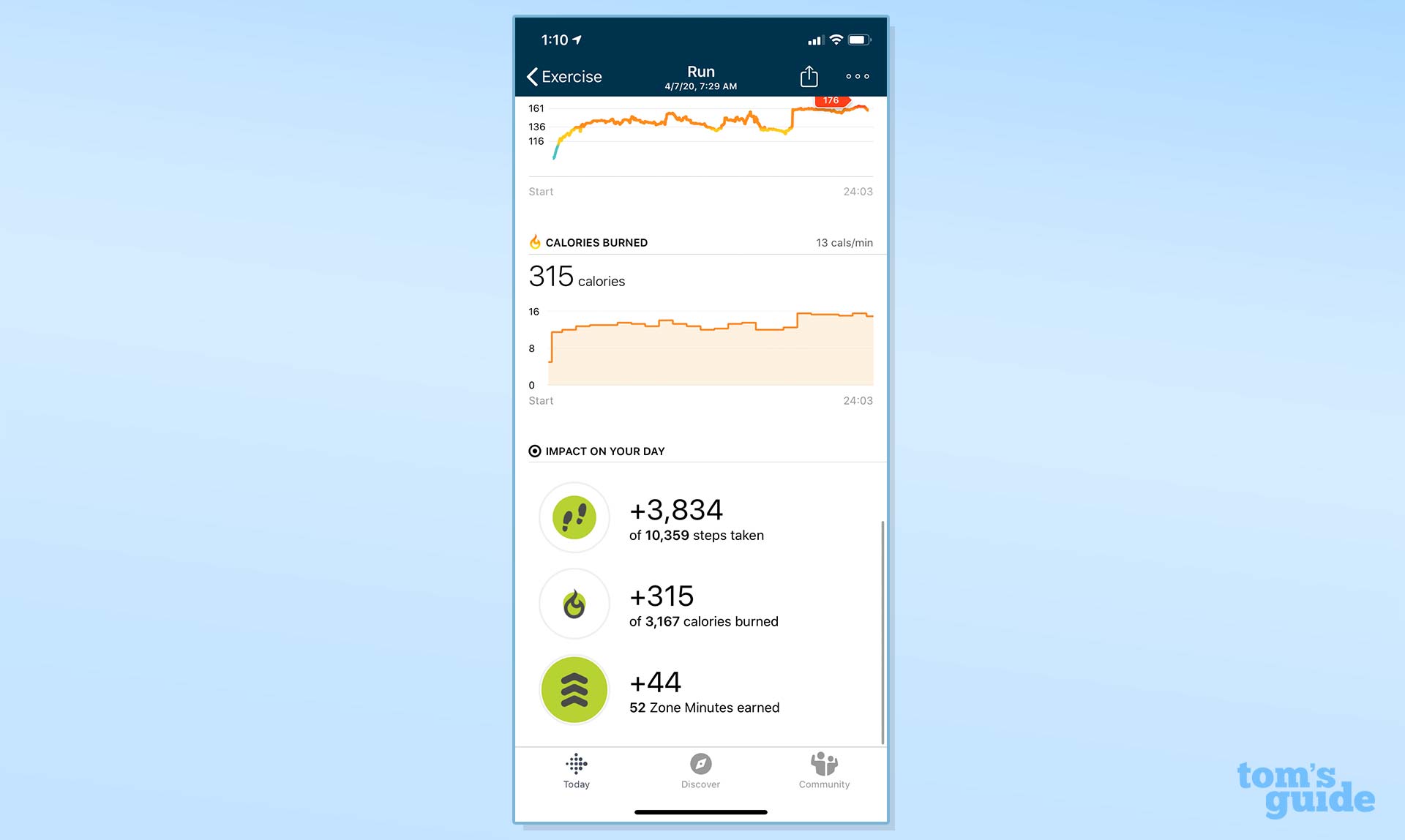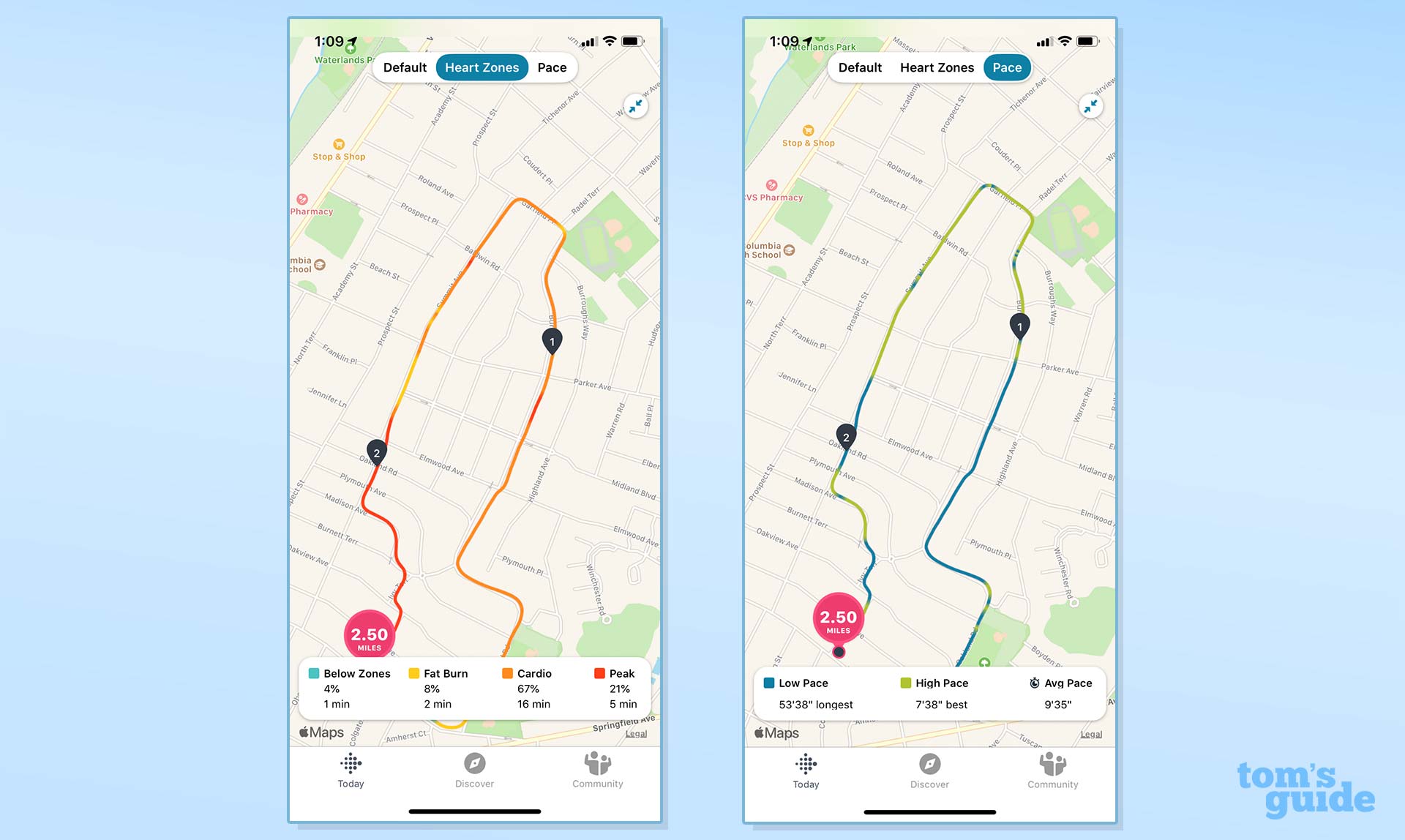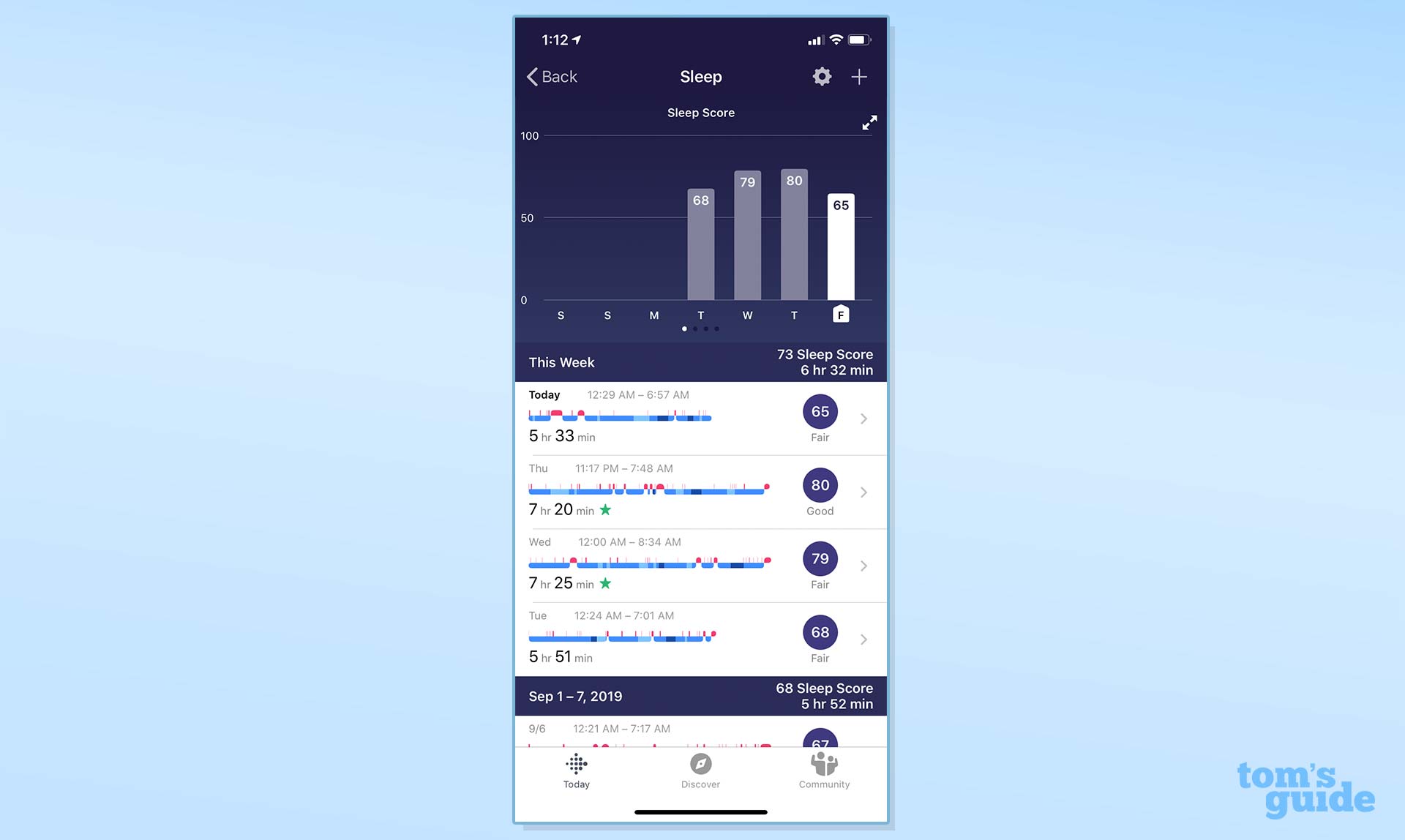Tom's Guide Verdict
With GPS and new health features, the Fitbit Charge 4 is the best fitness tracker for most people.
Pros
- +
Accurate, fast GPS
- +
Big community of users
- +
Good design
Cons
- -
No onboard music storage
Why you can trust Tom's Guide
The $150 Fitbit Charge 4 is only the company’s second device with GPS, and, when combined with a built-in heart rate monitor, it helps provide a much more accurate measure of your running, biking, and swimming.
Water resistance: 50 meters
GPS: Yes
Heart rate sensor: Yes
Display: 1 inch, 160 x 100-pixel touchscreen
Contactless payment: Fitbit Pay
Battery life: 7 days/5 hours continuous GPS
Considering that several of the best cheap fitness trackers — all which cost less than $100 — have GPS, it’s been a long time coming for the Fitbit. During my time testing the Charge 4, I was fortunate enough to be able to run outside in the suburbs, keeping a good distance from anyone I encountered. But the Charge 4 has some other great qualities too, including enhanced sleep tracking and a new fitness metric, to let you know if you’re getting enough exercise.
Be sure to read the rest of our Fitbit Charge 4 review to find out what else we like about one of the best fitness trackers yet, as well as our Apple Watch Series 3 vs. Fitbit Charge 4 and Fitbit Versa 2 vs. Fitbit Charge 4 face-offs to see the benefits you'll get with a traditional fitness tracker over a full-fledged smartwatch.
- Best home gym equipment
- Best Fitbit: Choose the right tracker for you
- The best Fitbit deals right now
Since launching the Charge 4, Fitbit has updated it to include two new features: Smart Wake can sense your sleep patterns, and adjust your wake time (up to 30 minutes), so as to avoid waking you while you're in a deep sleep. Dynamic GPS can sense when your phone is nearby, and use its GPS, rather than the Charge 4's GPS, in order to conserve battery life.
Fitbit Charge 4 review: Price and release date
The Fitbit Charge 4 was released in April 2020, and is available on Fitbit.com, as well as at online retailers including Amazon, Best Buy and Walmart. It's available in black or rosewood (a deep purplish red) for $149; a special edition, with a woven black/granite reflective band, is available for $169.
We're expecting the cost of the Fitbit Charge 4 to drop over the next couple of months as its successor, the Fitbit Charge 5, has now been released, with an ECG and EDA sensor, as well as a color AMOLED touchscreen. Read our Fitbit Charge 5 review here.
The Fitbit Charge 4 starts at $149.95 with either a black, rosewood and storm blue/black wrist band. A Special Edition Charge 4 costs $169.95, and comes with a granite reflective/black woven band.
Get instant access to breaking news, the hottest reviews, great deals and helpful tips.
Fitbit Charge 4 review: Design
I’ll be the first to admit that when it comes to smartwatches and fitness trackers, I like big, honkin’ devices like the Garmin Fenix 6. But there’s something to be said for the svelte Charge 4. For one thing, it’s a lot lighter, so you almost forget that it’s on your wrist.
The Charge 4 looks almost identical to its predecessor, the Charge 3. Both have a similar rectangular design with a grayscale OLED touchscreen, and a replaceable band that wraps around your wrist. A single touch-sensitive area on the left side of the Charge 4 acts as a Back button. Previous generations had a physical, silver button, and while the touch-button works well, I miss the silver color accent.
The Charge 4’s touchscreen was easy to read in all but bright sunlight, and responded quickly to swipes, except when my finger was sweaty; then, it didn’t work at all. That’s pretty typical for most touchscreen devices, though. However, the small size of the Charge 4’s screen did make it a bit more difficult to read while I was running and my head and arms were moving.
Both Charge devices will use a similar-size wristband, so Charge 3 owners who want to upgrade but like their old band will be able to easily swap them. All you have to do is press a button on the underside of the strap where it connects to the device.
Those with smaller wrists may also find there's a gap at the edges, where the Charge 4 connects to its strap; when my wife tried on the Charge 4, this gap was noticeable, though the device was secure.
Fitbit Charge 4 review: Active Zone Minutes
With the Charge 4, Fitbit is introducing a new fitness metric called Active Zone minutes. The tracker will measure the time you spend in target heart rate zones, and track your progress toward the goal of 150 minutes per week. It’s the recommended minimum from the American Heart Association, Centers for Disease Control, and World Health Organization.
You get double credit for the amount of time you spend doing vigorous activity. The Charge 4 will calculate your target heart rate zones based on your age and your resting heart rate; as your overall fitness level improves, the Charge 4 will automatically recalculate those zones.
Active Zone Minutes comes on Fitbit’s smartwatches now, too. Our Fitbit Sense review and Fitbit Versa 3 review explain more about how the feature performs on newer devices.
After Fitbit calculates your heart rate threshold for Active Zone Minutes (mine was 116 beats per minute), the app shows a chart of your heart rate, and the time you spent in each zone (Fat Burn, Cardio, and Peak). Although I only spent 23 minutes in the Cardio and Peak zones (136 bpm and higher), I was awarded 46 minutes of credit. I’ll take it!
Fitbit Charge 4 review: GPS and running performance
The most notable new feature of the Fitbit Charge 4 is its built-in GPS. The Charge 4 is only the second of Fitbit's devices, and the first of its fitness trackers to have this feature. (The company considers the Fitbit Ionic to be a smartwatch.) Many of Fitbit’s rivals have had GPS in similar trackers, and considering devices like the Garmin Forerunner 35 running watch now cost less than the Charge 4, it’s about time GPS became mandatory in trackers that cost more than $100.
I was pleasantly surprised at how quickly the Charge 4 picked up a GPS signal; on my first run with the device, it took about half a minute, but after that, it acquired the satellite in seconds. That’s what I get with the best GPS watches, and was happy to see it here, too.
By default, the Charge 4 has six exercise shortcuts loaded: Run, Bike, Swim, Treadmill, Outdoor Workout, Walk. Within the Fitbit app, though, you can choose from 16 other activities ranging from yoga to kickboxing, even interval workouts.
- Is Fitbit waterproof? The water resistance of every Fitbit model
I liked that during my run, the Charge 4 would buzz my wrist when I moved from one heart rate zone to another. However, I wish it would have also buzzed after each mile. If you have headphones hooked up (through your smartphone), the Charge 4 will give you audio cues to this effect.
After the Charge 4 synced with my phone, a map of my runs showed up in the Fitbit app, along with data for pace, elevation, heart rate zones, and calories burned. Even better, the app overlays this information along your route, so you can se precisely where you were huffing and puffing.
Looking at the data, there appeared to be a couple of instances where the Charge 4’s heart rate monitor was a bit tardy in its tracking; my heart rate would suddenly jump up 10 or 20 beats per minute before settling into a more consistent pattern. Overall, though, the heart rate tracking seemed pretty consistent.
Fitbit Charge 4 review: Sleep tracking
The Fitbit Charge 4 uses an SpO2 pulse oximeter sensor (also found in the Charge 3, Versa, and Ionic) to better help you understand your sleeping patterns. A new Restoration metric shows not just your heart rate while sleeping, but also your restlessness and estimated oxygen variation; if there’s a lot of variance, it could be linked to breathing issues such as sleep apnea.
The first night I wore the Charge 4, it said I didn’t fall asleep until nearly 12:30 a.m., a half an hour or so after I dozed off. I must’ve been tossing and turning a lot. However, my oxygen levels remained pretty consistent. The second night, the Charge 4 thought I didn’t fall asleep until 2 a.m. Fortunately, you can edit this data in the Fitbit app, to more accurately reflect your rest.
Fitbit has also brought its Smart Wake feature to the Charge 4; the company says it uses machine learning to know the best time to rouse you from your slumber, a feature my toddler has perfected without the assistance of advanced algorithms.
Fitbit Charge 4: Spotify controls
Adapting another feature brought over from Fitbit’s smartwatches, the Charge 4 will have Spotify music controls. While you'll still need your phone —sorry, no onboard music storage — this should make it easier for you to skip tracks and change playlists. This was a nice-to-have feature, but until you can actually download tracks to the Charge 4, as you can with the Versa 2, it’s not a feature I’d use regularly.
Fitbit Charge 4: Fitbit Pay
I’ll admit, I didn’t think much of contactless payment until I became slightly paranoid at touching any surface in public. However, it’s nice to know that I could use the Charge 4 to pay for stuff without having to put my fingers on a keypad. While not as ubiquitous as Apple Pay or Google Pay, Fitbit Pay works with 500 issuers, retailers in 44 countries, and 10 transit systems worldwide — not that I’m planning to use the New York City subway in the near future.
The Charge 4 is the first of Fitbit’s fitness trackers to have this feature, but it is available on the Versa, Versa 2, and Ionic. Here is a list of participating banks for Fitbit Pay.
Fitbit Premium
Launched last fall, Fitbit Premium is a $9.99 per month subscription service that offers personalized workouts, health and sleep insights, and coaching from trainers.
While not limited to those who purchase the Charge 4, Fitbit is currently offering a 90-day free trial of Fitbit Premium, as well as 40 new pieces of free content in the Fitbit app.
Fitbit Charge 4 review: Battery life
Fitbit says that the Charge 4 should last up to 7 days in normal fitness-tracking mode — the same as the Charge 3, and fairly standard for most fitness trackers — and will last up to 5 hours if you're actively using GPS.
I took the Charge 4 on a few runs using GPS; a 30-minute run drained the battery by about 20 percent. If you were to extrapolate that, you would use up the battery in about 2.5 hours — half the time that Fitbit claims. That's not great when compared to GPS watches, but not horrible if you're using the Charge 4 just to track your daily runs around the neighborhood.
After four days of wearing the Charge 4, plus two half-hour runs using GPS, the Charge 4’s battery life was down to 24 percent.
Fitbit Charge 4 review: Verdict
With the addition of GPS, the Fitbit Charge 4 represents a big improvement over the Charge 3. Now, you can track your running, biking and swimming as accurately as you can with a bona fide GPS watch. Plus, the Charge 4 has some other excellent features, including wireless payment support and better health tracking.
That said, if you’re a dedicated runner, you’ll be better served by one of the best GPS watches, such as the $300 Garmin Forerunner 245, as those devices have larger displays, more granular metrics and settings and longer battery life, especially when using GPS.
But there’s no denying that if you want a fitness tracker to precisely measure your exercise, sleep, and other health metrics, you can’t do better than the Fitbit Charge 4.

Michael A. Prospero is the U.S. Editor-in-Chief for Tom’s Guide. He oversees all evergreen content and oversees the Homes, Smart Home, and Fitness/Wearables categories for the site. In his spare time, he also tests out the latest drones, electric scooters, and smart home gadgets, such as video doorbells. Before his tenure at Tom's Guide, he was the Reviews Editor for Laptop Magazine, a reporter at Fast Company, the Times of Trenton, and, many eons back, an intern at George magazine. He received his undergraduate degree from Boston College, where he worked on the campus newspaper The Heights, and then attended the Columbia University school of Journalism. When he’s not testing out the latest running watch, electric scooter, or skiing or training for a marathon, he’s probably using the latest sous vide machine, smoker, or pizza oven, to the delight — or chagrin — of his family.

